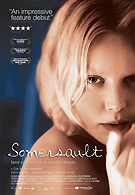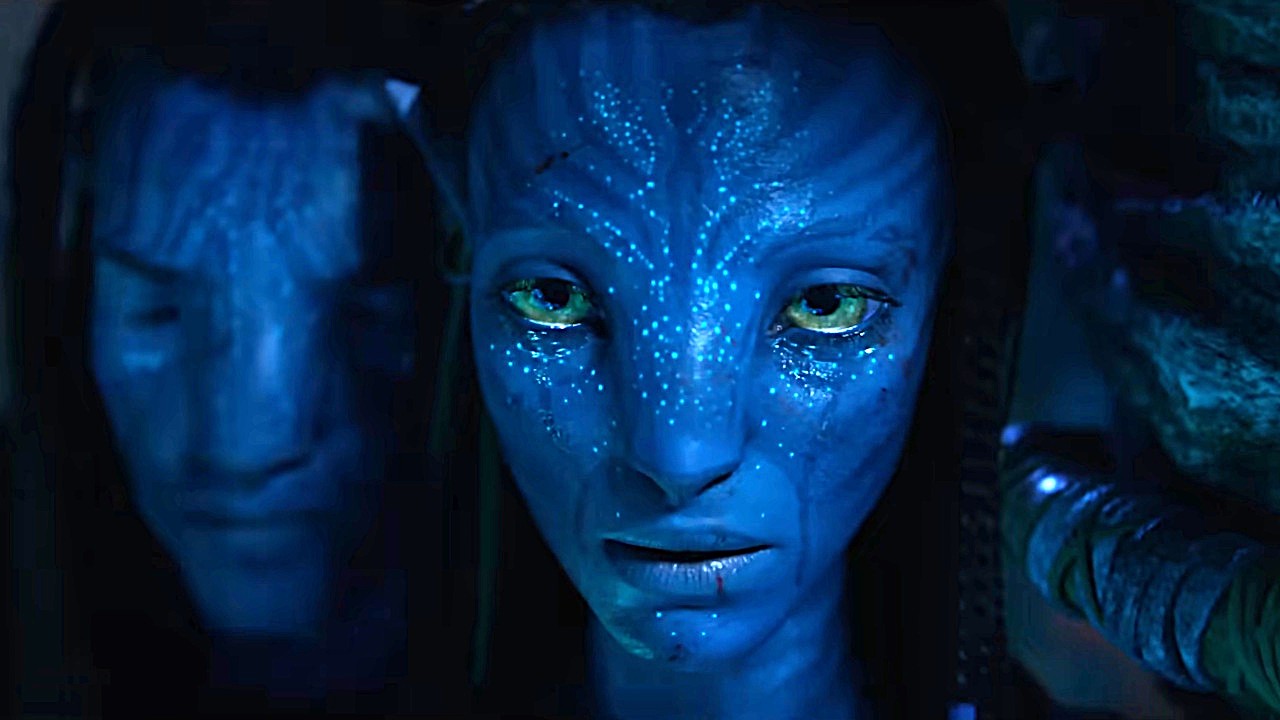Somersault tells the tale of Heidi (Abbie Cornish), a 16 year old girl who for reasons known only to herself, makes sexual advances towards her mother’s boyfriend when mommy leaves for work one day. When mom unexpectedly walks in on them and naturally freaks Heidi leaves home, fleeing north in search of a promised job, which never emerges. Stranding herself in a small skiing town, she is taken in by a gruff but kindly motel owner (Lynette Curran) and searches for work while engaging in random and increasingly exploitative sexual encounters with the local men-folk under the guise of looking for intimacy. When she meets Joe (Sam Worthington), the twenty-something son of a wealthy local farmer, she may have found someone to connect with, but Joe’s own inability to express his feelings class divides and Heidi’s erratic behavior threaten their new “relationship.”
The Australian drama Somersault has won 35 awards since it's initial release in 2004 including a staggering 13 Australian Film Institute awards and yet only one word hits me after watching it: Why? The only thing I can possibly imagine is that there were no other Australian movies released in 2004 or that all the awards judges were blinded by Abbie Cornish’s girl-next-door cuteness.
Because, truth be told, for all its supposed awards and accolades, Somersault is nothing but an exercise in the world’s worst pretentious film school clichés. The ponderous bass-heavy soundtrack, the lingering slow-motion shots in heavy tint, the inane attempts at symbolism, the style mistaken for substantive storytelling, the sparse dialogue; all the worst things you hate in art-house movies rolled into one film.
The problems only get worse for Somersault because the plot borders on non-existent while crass stereotypes run rampant. Writer/director Cate Shortland seems to suffer from some kind of attention deficit disorder where she never seems to be able to stick with a story thread or piece of character development long enough to create anything interesting out of it. There is plenty of setup but never once is there any payoff. Characters are lead towards some kind of revelation or growth only to be tossed aside in favor of another bizarre attempt at creating symbolism around the color red which, like the characters, is never really explained or exploited. Every so often we’re treated to lingering, occasionally out of focus landscape shots, but both of these elements feel like they’ve just sort of thrown in to break up and extend an otherwise empty story and to score even more art-house brownie points with those ever important awards judges.
For the most part Shortland paints the men in her feature with broad feminist stereotypes and the women with apologetic misunderstanding, in the process undermining any credibility the story may be trying to exhibit. This is painfully highlighted in one scene near the end, where Joe angrily questions Heidi’s latest misjudged sexual encounter, asking her if she has some kind of mental problem. A fair question to ask of a girl who comes close to being raped in her inexplicable but unending quest for intimacy through casual sex you might think. But again, Shortland never sees fit to take time to address this properly, she just excuses it as part of Heidi’s “coming-of-age” journey. Whether she learns or suffers from her horrible experiences or grows as a person as a result of them or whether she’s no wiser as a result, we never really find out.
Meanwhile Heidi’s love interest Joe is painted as an insecure Neolithic man who can’t express his feelings to a woman, so he treats her like crap when not having sex with her and ends up kissing a gay guy the minute he starts to try and express his feelings about her. Whether Shortland is truly painting Joe as someone with a confused sexual identity or painting a ridiculous premise that straight men who can’t articulate their feelings must be rampantly insecure in their sexuality, again Shortland never hangs around the thread long enough to bother expanding on. That rest of the men are painted as either sex-obsessed bastards looking to take advantage of the first vulnerable girl who comes along or backward hicks or both makes the choice more questionable; Either Shortland has some issues she needs to address in her own life, or it paints a dire picture of the people of rural Australia.
What Shortland is trying to portray here isnever clear. The issue of mistaking sex for intimacy is not a new concept but there are many movies out there which give a better account of the emotional turmoil of this aspect of teenage life and its ability to shape or destroy young people. But in Somersault I found myself unable to relate or connect with any of the characters or their situations, the depictions of such being devoid of a sense of reality, consequence, or clear meaning. It never addresses any issues it tries to raise, nor does it leave any food for thought in place of it.
Your Daily Blend of Entertainment News
Somersault is a slow, boring, unrealistic, self-important mess with nothing interesting to say and no patience to take the time to say what it does want to say. Ironically, much like the two main characters it portrays, it may look nice but is undone by its complete inability to articulate anything. The truth is that this feels like a feature length film school project made for spare film school tutors to grade; it's an overlong exercise rather than a true movie. For all its awards, Somersault fails to make the grade.

